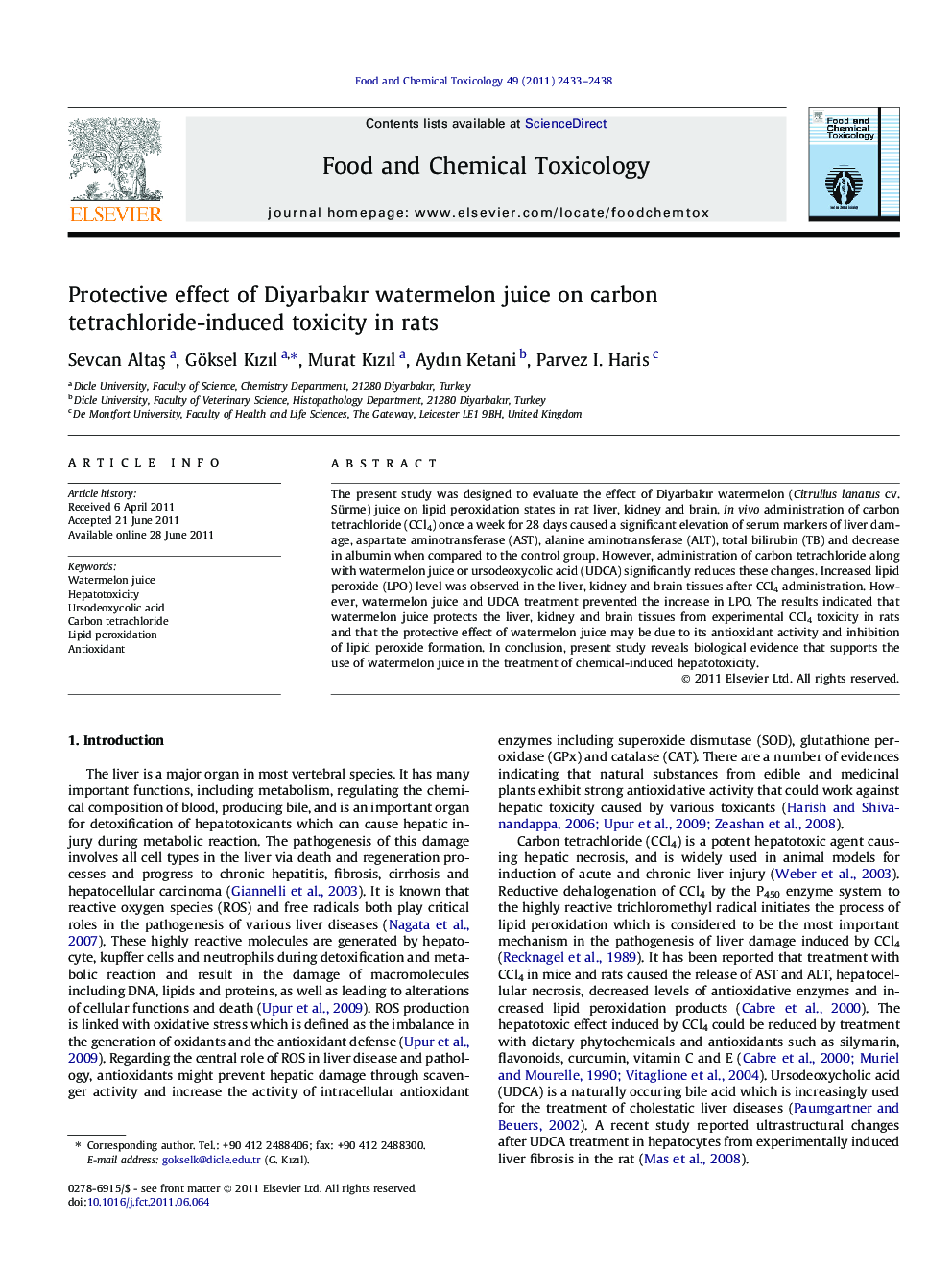| Article ID | Journal | Published Year | Pages | File Type |
|---|---|---|---|---|
| 5853181 | Food and Chemical Toxicology | 2011 | 6 Pages |
The present study was designed to evaluate the effect of Diyarbakır watermelon (Citrullus lanatus cv. Sürme) juice on lipid peroxidation states in rat liver, kidney and brain. In vivo administration of carbon tetrachloride (CCl4) once a week for 28 days caused a significant elevation of serum markers of liver damage, aspartate aminotransferase (AST), alanine aminotransferase (ALT), total bilirubin (TB) and decrease in albumin when compared to the control group. However, administration of carbon tetrachloride along with watermelon juice or ursodeoxycolic acid (UDCA) significantly reduces these changes. Increased lipid peroxide (LPO) level was observed in the liver, kidney and brain tissues after CCl4 administration. However, watermelon juice and UDCA treatment prevented the increase in LPO. The results indicated that watermelon juice protects the liver, kidney and brain tissues from experimental CCl4 toxicity in rats and that the protective effect of watermelon juice may be due to its antioxidant activity and inhibition of lipid peroxide formation. In conclusion, present study reveals biological evidence that supports the use of watermelon juice in the treatment of chemical-induced hepatotoxicity.
⺠Juice, extracted from Diyarbakır watermelon, displays antioxidant activity. ⺠Watermelon juice used daily protected an animal model from CCl4 toxicity. ⺠Watermelon juice alleviates pathological changes caused by CCl4.
